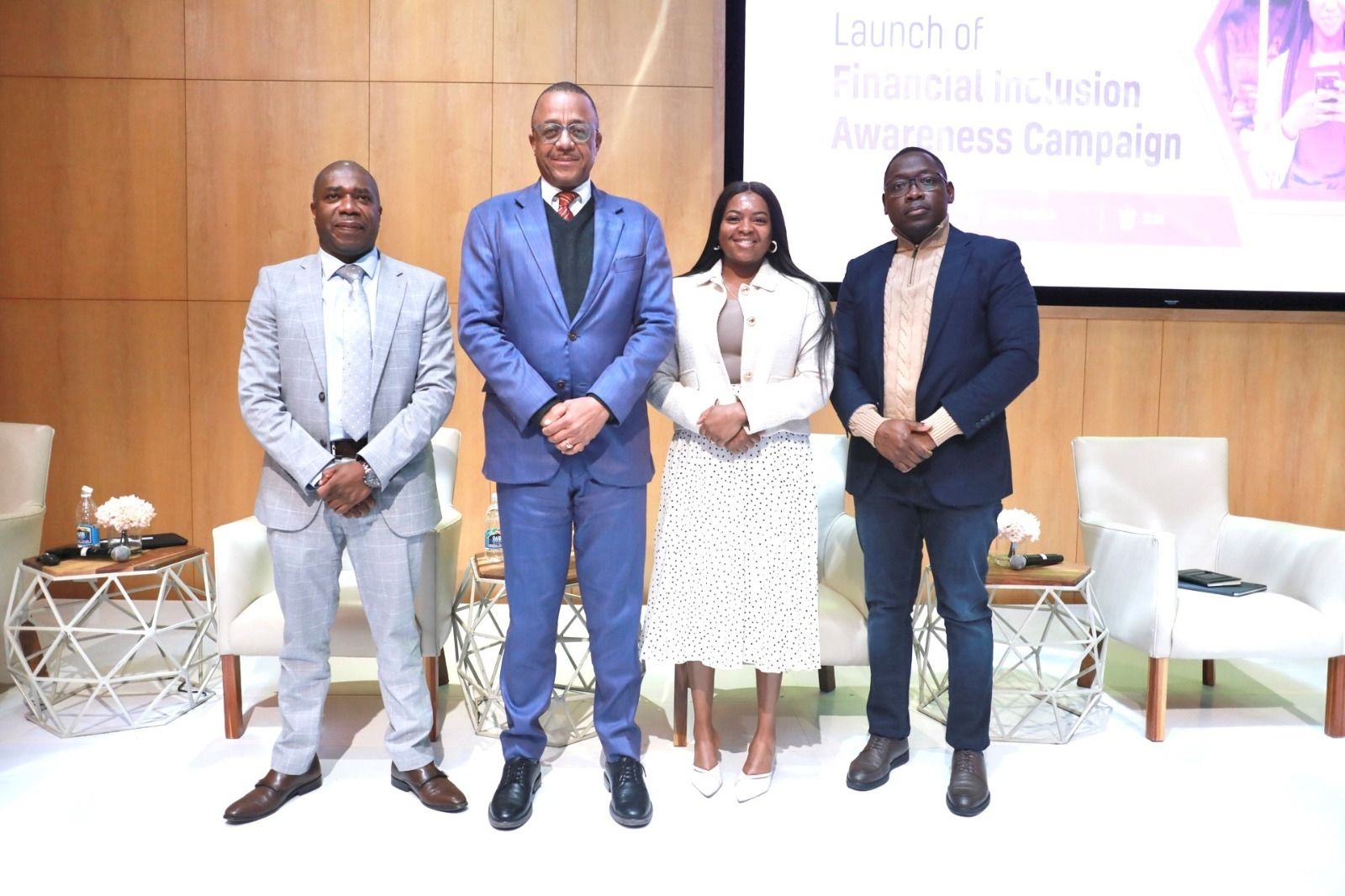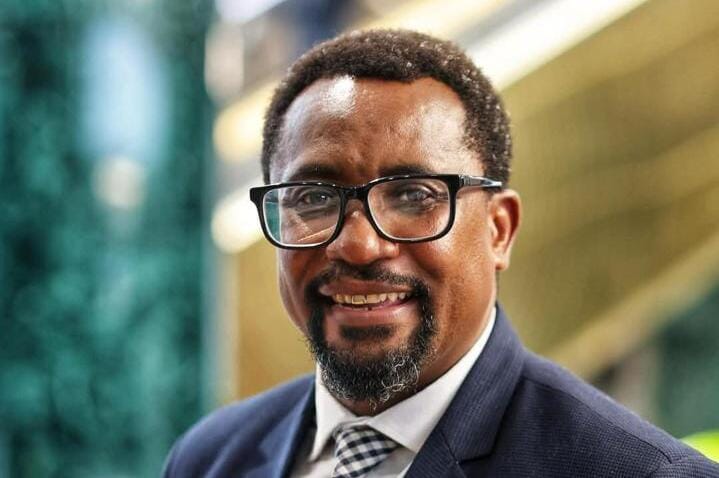- Revolox
- Posts
- Namibia Launches National Financial Inclusion Drive to Foster Real Economic Participation- ISSUE #65☕
Namibia Launches National Financial Inclusion Drive to Foster Real Economic Participation- ISSUE #65☕
The Bank of Namibia (BoN) has launched a comprehensive Financial Inclusion Awareness Campaign aimed at ensuring every Namibian can actively engage in the country’s formal financial system.

Revolox banner
Welcome to Revolox Media — where the headlines hit harder, and the youth stay in the loop.
In today’s edition, we unpack bold shifts shaping Namibia’s economy, tech breakthroughs across borders, and a major event that’s got the mining sector buzzing:
IBIA kickstarts a national financial inclusion drive, aiming to empower everyday Namibians through accessible banking and economic participation. Could this be the boost grassroots communities have been waiting for?
A new mining policy shakes up the game: Namibia now mandates 51% local ownership in all new mining ventures — a move to drive inclusive growth and keep national wealth at home.
Across the globe, China’s Darwin Monkey AI stuns the tech world with a record-breaking 2 billion neurons, edging closer to brain-like artificial intelligence. Is this a leap or a warning?
And finally, we spotlight the upcoming Mining Expo 2025, where industry leaders, innovators, and investors will converge to map out the future of mining in Namibia and beyond.
Get ready — this issue blends policy, progress, and possibility.
MARKET CORNER
NSX Index Overview
Index | Price | % Change | YoY % Change | YTD % Change |
|---|---|---|---|---|
NSX Overall | 1,739.93 | -1.07% | -0.50% | -3.40% |
NSX Local | 751.75 | +0.02% | 10.48% | 8.74% |
TOP MOVERS: NSX Local Stocks
Stock | Price (N$) | % Change | YoY % Change | YTD % Change | Volume (Shares Traded) |
|---|---|---|---|---|---|
Capricorn Group Ltd | 21.83 | +0.09% | 12.18% | 6.07% | 0 |
Letshego Holdings Namibia Ltd | 6.60 | 0.00% | 44.42% | 32.00% | 0 (32,369 on July 14) |
Nictus Holdings | 2.90 | 0.00% | 30.63% | 16.00% | 0 |
Standard Bank Namibia | 11.07 | 0.00% | 26.23% | 21.92% | 0 (1,900 on July 14) |
FirstRand Namibia | 51.55 | 0.00% | 10.88% | 10.86% | 0 (21,660 on July 23) |
ECONOMIC PULSE
Indicator | Value | Percentage % | Change (YoY) |
|---|---|---|---|
Real GDP (Dec 24) | 157,476.47M | 3.71% | 3.71% |
Nominal GDP (Dec 24) | 245,097.32M | 7.08% | 7.08% |
Inflation (Jun 25) | 3.66% | 5.79% | -21.12% |
Private Sector Credit Extension (May 25) | 119,330.60M | 0.54% | -2.25% |
Namibian Repo Rate (Jun 25) | 6.75% | 0.00% | -12.90% |
FOREIGN EXCHANGE RATES
Currency Pair | Value | Percentage % | Change (YoY) |
|---|---|---|---|
USD/NAD | 17.90 | -0.22% | -3.40% |
GBP/NAD | 23.80 | -0.08% | 0.58% |
EUR/NAD | 20.72 | -0.19% | 2.05% |
BTC/NAD | 2,109,239.15 | +1.52% | 69.80% |
Disclaimer: The financial data and market information provided in the tables below, including stock prices, indices, exchange rates, economic indicators, and other metrics, are sourced from user-provided data and are accurate as of August 6, 2025, based on the latest input. This information is for informational purposes only and does not constitute financial advice, investment recommendations, or an offer to buy or sell securities. Market data is subject to change, and past performance is not indicative of future results. Users should verify data independently and consult with a qualified financial advisor before making investment decisions.
BUSINESS & ECONOMY

Image credit: Business express
Namibia Launches National Financial Inclusion Drive to Foster Real Economic Participation
The Bank of Namibia (BoN) has launched a comprehensive Financial Inclusion Awareness Campaign aimed at ensuring every Namibian can actively engage in the country’s formal financial system. Officially unveiled by Deputy Governor Ebson Uanguta, the initiative marks a strategic shift from merely increasing account numbers to deepening meaningful usage and economic empowerment through financial services.
Beyond Accounts: Empowering True Participation
During the keynote launch, Uanguta emphasized that equitable access to financial services is essential for true monetary stability and national economic wellbeing. “Access must go deeper than a bank account; it must open doors to real and meaningful participation,” he said, highlighting the persistent barriers faced by informal traders, young entrepreneurs, and vulnerable groups such as pensioners who often fall prey to financial scams due to limited digital literacy.
Three Pillars for Inclusive Finance
The campaign is anchored on three inseparable pillars:
Access to Financial Services — ensuring availability across all regions and demographics
Financial Literacy — equipping citizens with knowledge to utilize services effectively and safely
Consumer Protection — safeguarding users from exploitation and building trust in formal financial tools
Uanguta warned that without these pillars working in tandem, efforts risk either leaving people exposed or continuing their exclusion.
Community-Centric and Data-Driven Approach
Key elements of the campaign include community outreach conducted in local languages, the launch of a Digital Financial Literacy Booklet, and a nationwide financial inclusion survey developed in collaboration with the Namibia Statistics Agency. These tools aim to diagnose gaps and craft tailored policy solutions grounded in current, robust data.
Modernising Payments for Greater Inclusion
The Bank of Namibia is also advancing the development of an Instant Payment System to modernize digital transactions making them faster, safer, and more accessible—an important leap toward bridging the urban-rural divide and accommodating diverse financial behaviors.
International Recognition, Domestic Impact
Namibia’s escalating leadership role in financial inclusion is set to be showcased as host of the Alliance for Financial Inclusion (AFI) Global Policy Forum in Swakopmund in September 2025. However, Uanguta stressed that hosting the forum should translate into measurable improvements at home. “Leadership means little without impact at home,” he remarked.
Collaborative Commitment to Nationwide Inclusion
BoN reaffirmed its commitment to partnering with public and private sector stakeholders to ensure financial inclusion efforts reach “every Namibian, one community, one business, and one household at a time.” This national campaign represents a decisive move to translate policy into practice, driving equitable economic participation and sustainable monetary stability.
Source: Business express

Image credit Business express
Namibia Mandates 51% Local Ownership in New Mining Ventures to Drive Inclusive Growth
In a landmark policy announcement at Mining Expo 2025 in Windhoek, Namibia’s Deputy Prime Minister and Minister of Industries, Mines and Energy, Natangwe Ithete, declared the government’s firm commitment to enforcing a 51% Namibian ownership requirement in all new mining projects. This move is designed to ensure that the country’s rich mineral resources translate directly into broad-based social and economic benefits for Namibians.
Mining for Namibia’s Future: Local Empowerment at the Core
Speaking under the Expo’s theme, “Mining for Namibia’s Future: Job Creation, Local Empowerment, and Economic Transformation,” Minister Ithete stressed the imperative of treating Namibia’s mineral wealth as a strategic national asset. “It is our collective responsibility to ensure the exploitation of these resources results in tangible benefits for all Namibians,” he said.
The government is actively working with industry stakeholders to craft robust policy frameworks that secure majority local ownership in new mining ventures. This approach is viewed not just as social justice but a foundation for long-term sector stability and sustainable development.
Revised Minerals Bill and Stakeholder Consultations Ahead
This ownership mandate will be enshrined through a forthcoming revision of the Minerals Bill, with consultations poised to begin in key mining regions to ensure legislation reflects Namibia’s aspirations for an equitable, modern mining industry. The goal is to embed local ownership, capacity building, and value addition as statutory pillars.
Crackdown on Licence Hoarding
Minister Ithete also announced a crackdown on mineral rights holders who have acquired licenses but failed to develop them. In partnership with the Namibia Investment Promotion and Development Board (NIPDB), the Ministry has issued notices to non-compliant holders and pledged direct engagement to enforce productive utilisation. “We will not tolerate hoarding of licences for purposes unrelated to national development,” he affirmed.
Focus on Value Addition and Community Impact
Ithete reiterated that alongside welcoming committed investors, the government’s priorities remain clear: fostering value addition and beneficiation, boosting local content, enabling skills transfer, and creating employment. These pillars are essential prerequisites for inclusive, sustainable mining growth.
He urged the mining sector to transcend conventional corporate social responsibility practices by delivering tangible improvements in education, housing, healthcare, and services for communities in mining-affected areas such as Okangwati, Okankolo, Tsunkwe, and Uis.
The Bottom Line
Namibia’s bold 51% local ownership policy signals a decisive shift toward harnessing its mineral wealth for comprehensive national development. By mandating majority Namibian ownership while tightening compliance and promoting value-driven investment, the government aims to transform the mining sector into a true engine of equitable prosperity and social upliftment.
Source: Business express
TECH

Image credit:PCmag.com
China’s Darwin Monkey Sets New Record for Brain-like AI With 2 Billion Neurons
Chinese researchers at Zhejiang University have unveiled the world’s largest neuromorphic computer, named the Darwin Monkey, marking a significant leap in brain-inspired artificial intelligence. The system, powered by 960 specialized Darwin 3 chips, incorporates more than 2 billion artificial neurons and over 100 billion synapses—numbers that closely mirror the scale of a real macaque monkey’s brain.
How It Works
Unlike traditional computers that process data in a sequential fashion, neuromorphic computers like Darwin Monkey mimic the structure and function of a biological brain. Each Darwin 3 chip enables complex, parallel information processing similar to how living neural networks operate. The entire system consumes about 2,000 watts of power—a remarkably efficient feat for its scale. Darwin Monkey’s architecture allows it not only to model a monkey brain but also to simulate smaller brains (like zebrafish and mice) for scientific research and artificial life experiments.
Researchers deployed brain-inspired applications on Darwin Monkey, including sensory processing (vision, hearing), logical reasoning, language tasks, and mathematical computations. The machine operates with advanced models such as DeepSeek, capable of creative problem-solving and data generation.
How Does It Compare Globally?
Until now, Intel’s Hala Point, announced in April 2024, held the record with a neuromorphic system containing 1.15 billion neurons across 1,152 Loihi 2 chips. While Hala Point is also aimed at advancing AI efficiency and continuous learning, Darwin Monkey nearly doubles the neuron count, positioning China at the forefront of large-scale brain simulation and neuromorphic engineering.
Is This a Step Toward Human-Level AI?
While the Darwin Monkey’s scale is impressive, it’s still a model of a macaque—not a human. Macaque brains are less complex than human brains, particularly lacking the circuitry for advanced skills like language and abstract reasoning. Researchers acknowledge that replicating the human brain's capabilities remains a formidable challenge and is likely still years away. However, Darwin Monkey demonstrates the accelerating pace of brain-like computing and highlights the potential for future robotic systems—or even more advanced “artificial brains.”
The Bottom Line
China’s Darwin Monkey is the world’s first neuromorphic computer built on dedicated chips approaching the neuron and synapse count of a monkey’s brain, outperforming the previous record-holder from Intel. While it won’t be simulating a human any time soon, it marks a giant step forward for brain-inspired AI—and opens the door for future advances in neuroscience, robotics, and next-generation artificial general intelligence.
Source: PCmag.com
EVENTS

Reply